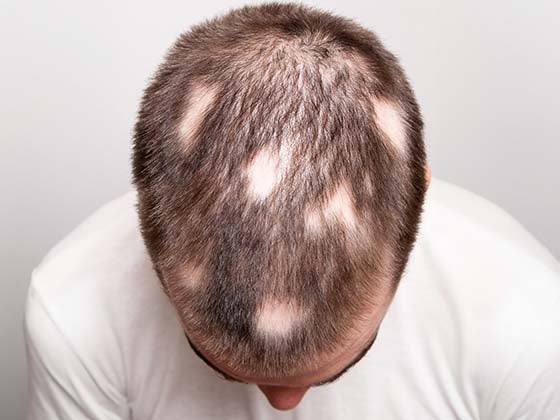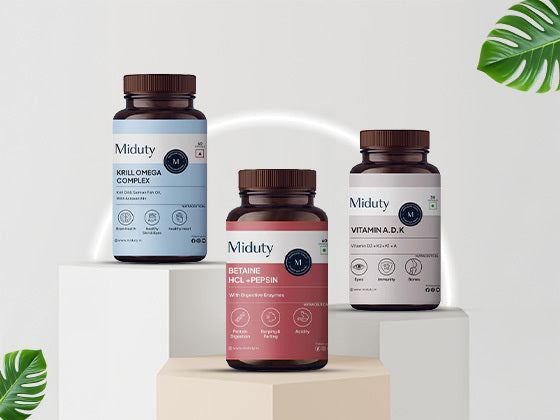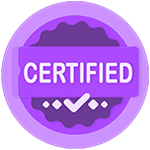Shea butter has been used for centuries in Africa for its skin benefits and has now gained popularity in the Western world. This natural ingredient is derived from the shea tree nut and is known for its moisturising and nourishing properties. This guide will explore the benefits of shea butter for skin and how to incorporate it into your skincare routine.
What is shea butter?

Shea butter is a fatty substance that is extracted from the nut of the shea tree found in Africa. It is rich in vitamins A, E, and F and contains high levels of fatty acids that help to hydrate and nourish the skin. Shea butter is solid at room temperature but becomes soft and spreadable when it is warmed up. It has a creamy, smooth texture and is often used in skincare products to provide hydration and nourishment to the skin.
The origin and extraction process of shea butter

Shea butter is made from the nut of the shea tree, also known as Vitellaria paradoxa, which is native to Africa. The shea tree grows wild in the African savannah, particularly in Ghana, Nigeria, Burkina Faso, and the Ivory Coast. The extraction process of shea butter is traditionally carried out by women in West Africa and involves several steps:
-
The process begins with the collection of ripe shea nuts that have fallen from the shea tree or are hand harvested from the tree. This usually happens during the dry season, when the fruits have matured.
-
Following harvest, the shea nuts are spread out to dry in the sun. This step reduces the moisture content of the nuts, making them easier to store.
-
Once dried, the shea nuts are cracked open to reveal the kernel within. This is usually done manually with stones or other tools to break open the nut's hard shell.
-
The kernels are then roasted, either on an open fire or in large pots. Roasting helps to dry out the kernels and brings out the distinctive nutty aroma of shea butter.
-
The roasted kernels are ground into a paste with either traditional grinding stones or mechanical equipment. This process produces a thick, oily paste known as shea butter.
-
To release the oils, the shea paste is kneaded either by hand or with machinery. Some producers boil the paste to separate the oil from the other ingredients.
-
After boiling, allow the mixture to cool and solidify. Shea butter rises to the surface, forming a thick, creamy layer that separates easily from water and other impurities.
-
The extracted shea butter may be further filtered to remove any remaining impurities, yielding a clean and pure final product.
Chemical composition of shea butter and its importance

Shea butter is well-known for its high concentration of beneficial compounds, making it popular in skincare, culinary, and pharmaceutical applications. Its chemical composition typically includes the following:
-
Fatty Acids: Shea butter is primarily made up of fatty acids, such as oleic acid (40-60%), stearic acid (20-50%), and linoleic acid (3-11%).
-
These fatty acids contribute to shea butter's moisturising and emollient properties, which help to nourish and soften skin.
-
Triglycerides: Triglycerides are the primary components of shea butter, which accounts for its solid consistency at room temperature. These triglycerides form a protective barrier on the skin, preventing moisture loss and maintaining skin hydration.
-
Phytosterols: Shea butter contains phytosterols like beta-sitosterol, which are anti-inflammatory and help to soothe and calm irritated skin. Phytosterols also contribute to shea butter's antioxidant activity, which protects the skin from environmental damage.
-
Vitamins: Shea butter is high in vitamins A and E, both of which are potent antioxidants that protect the skin from free radical damage. Vitamin A supports skin cell regeneration and helps to improve skin texture, while vitamin E promotes skin healing and provides anti-aging benefits.
-
Polyphenols: Polyphenols are natural antioxidants found in shea butter that help to neutralise free radicals and reduce oxidative stress on the skin. These compounds help to give shea butter its anti-inflammatory and anti-aging properties.
Comparison of shea butter with other natural butters

Comparing shea butter with other natural butter involves considering various factors, such as their composition, properties, uses, and benefits. Let's compare shea butter with three other popular natural butters: cocoa butter, mango butter, and avocado butter.
-
Shea Butter: Rich in oleic, stearic, and linoleic acids, as well as vitamins A and E. Properties include high moisturization, emollience, anti-inflammatory, and antioxidant content. Its moisturising, healing, and soothing properties make it a popular ingredient in skincare products. Also found in hair care products, lip balms, and cosmetics. Effective for dry, sensitive, and irritated skin. Promotes skin hydration, elasticity, and overall health.
-
Cocoa Butter: Consists mostly of natural antioxidants and the acids stearic, oleic, and palmitic. Properties include a rich texture, a chocolate-like aroma, solidity at room temperature, and melting point at body temperature. Its moisturising and emollient qualities make it a popular ingredient in skincare products. Also found in chocolates, confectionery, and pharmaceuticals. Benefits include moisturising, nourishing, and protecting the skin. Can increase skin elasticity and minimise the appearance of scars and stretch marks.
-
Mango Butter: Oleic acid, stearic acid, and vitamins A and C are all present in high concentrations. Creamy texture, similar to shea butter, melts when in contact with the skin and absorbs quickly. Used in skincare formulations, especially for dry or mature skin. Lotions, creams, balms, and hair care products may contain this ingredient. Benefits include moisturising, softening, and smoothing the skin. Provides antioxidant protection and promotes collagen production.
-
Avocado Butter: Rich in oleic acid, linoleic acid, vitamins A, D, and E, as well as potassium and lecithin. Soft and creamy texture, absorbs quickly into the skin, and doesn't leave a greasy residue. Suitable for skincare products, especially those for dry, damaged, or mature skin. Also found in hair care products and lip balms. Moisturizes, nourishes, and rejuvenates the skin. It helps to improve skin texture, reduce inflammation, and promote wound healing.
While these natural butters have some similarities in terms of moisturising and nourishing properties, they also have distinct compositions and characteristics that make them appropriate for various skin types and preferences. Choosing the right butter is determined by personal needs, skin concerns, and product formulation requirements.
How to use shea butter in your skincare routine

Shea butter can be used on its own or incorporated into skincare products for maximum benefits. Here's how to use it in your skincare routine:
Step-by-step guide for incorporating shea butter

Incorporating shea butter into your skincare routine is a simple step that can provide numerous skin benefits. Here's a step-by-step guide for adding shea butter to your routine:
-
Choose High-Quality Shea Butter: Look for unrefined, raw, or organic shea butter for maximum benefits. These varieties preserve more of the natural nutrients and properties than refined versions.
-
Select a Suitable Product or DIY Recipe: Decide how you want to use shea butter in your routine. You can use it on its own or add it to DIY skincare recipes like lotions, creams, body butters, balms, or hair masks.
-
Prepare Your Ingredients (If DIY): If you are making a DIY skincare product, gather all of the necessary ingredients and tools. This could involve emulsifiers, additional oils, and essential oils, based on your recipe.
-
Melt the Shea Butter (If Necessary): If your shea butter is solid at room temperature, you may need to melt it before incorporating it into your recipe. You can do this by placing the shea butter in a heat-safe container and melting it gently using a double boiler or microwave.
-
Combine Shea Butter with Other Ingredients (If DIY): Once melted, combine the shea butter with other ingredients according to your recipe. Mix thoroughly until all the ingredients are well incorporated.
-
Apply Directly to the Skin: If you're using shea butter on its own, scoop out a small amount and warm it between your palms until it melts. Then, apply it directly to the desired areas of your skin. Shea butter can be used on the face, body, lips, and even hair.
-
Massage into the Skin: Massage the shea butter gently into your skin using upward, circular motions. Focus on areas that are dry, rough, or in need of extra hydration.
-
Allow Absorption: Allow the shea butter to absorb fully into your skin before getting dressed or going to bed. This may take a few minutes, depending on the amount applied and your skin type.
-
Store Properly: Store any leftover shea butter or DIY skincare products in a cool, dry place away from direct sunlight. Proper storage helps to preserve the quality and shelf life of the product.
-
Use Regularly: Incorporate shea butter into your skincare routine regularly for best results. Consistent use can help improve skin hydration, texture, and overall health over time.
By following these steps, you can easily incorporate shea butter into your skincare routine and reap its moisturising, nourishing, and soothing benefits.
Shea butter in DIY skincare recipes

Shea butter is a versatile ingredient that can be incorporated into various DIY skincare recipes to provide moisturizing, nourishing, and soothing benefits for the skin. Here are three simple DIY skincare recipes featuring shea butter:
-
Whipped Shea Butter Body Butter: Ingredients include 1/2 cup unrefined shea butter, 1/4 cup coconut oil, 1/4 cup sweet almond or jojoba oil, Optional: a few drops of essential oil (such as lavender, rose, or vanilla) to fragrance. In a double boiler, combine the shea butter, coconut oil, and sweet almond oil (or jojoba oil) until completely liquefied. Remove from the heat and allow the mixture to cool slightly. Place in the refrigerator for 15-20 minutes to partially solidify. Once the mixture starts to solidify around the edges but is still soft in the center, add optional essential oils for fragrance. Use a hand mixer or stand mixer to whip the mixture until light and fluffy, resembling whipped cream. Transfer the whipped body butter to a clean, airtight container and keep it in a cool, dry place.
-
Shea Butter Lip Balm: Ingredients include 2 tablespoons unrefined shea butter, 1 tablespoon coconut oil, and 1 tablespoon beeswax pellets. For flavouring, add a few drops of essential oil (such as peppermint or lemon). In a double boiler, combine the shea butter, coconut oil, and beeswax pellets until completely liquefied. Remove from heat and let the mixture cool slightly. Add optional essential oils for flavor, if desired. Pour the mixture into lip balm containers or small tins. Let it cool and solidify completely before use. Once solidified, cap the containers and label them for future use.
-
Shea Butter Hand Cream: Ingredients are 1/4 cup shea butter (unrefined), 2 tablespoons coconut oil, 1 tablespoon sweet almond oil or jojoba oil. Optional: a few drops of essential oil (such as lavender or chamomile) for fragrance. In a double boiler, melt the shea butter, coconut oil, and sweet almond oil (or jojoba oil) together until fully liquefied. Remove from heat and let the mixture cool slightly. Add optional essential oils for fragrance, if desired. Transfer the mixture to a clean, airtight jar or container. Let it cool and solidify completely before use. Once solidified, screw the lid on tightly and store the hand cream in a cool, dry place.
These DIY skincare recipes are simple to make and can be tailored to your specific preferences and skin needs by adding different essential oils or other ingredients.
Precautions and best practices when using shea butter

While shea butter is generally safe and well-tolerated by most people, there are some precautions and best practices to remember when using it:
-
Before applying shea butter to a larger area of your skin, conduct a patch test. Apply a small amount of shea butter to a discreet area, such as the inside of your wrist or elbow, and wait 24-48 hours to detect allergic reactions or skin sensitivities.
-
Choose high-quality, unrefined shea butter for skin care. Unrefined shea butter retains more natural nutrients and properties than refined versions.
-
Keep shea butter in a cool, dry place, away from direct sunlight and heat. Proper storage helps to maintain its quality and shelf life.
-
Shea butter's melting point is approximately 90-95°F (32-35°C). It may melt in hotter temperatures and solidify in cooler ones. This is normal and does not affect the product's effectiveness.
-
Shea butter's consistency varies depending on temperature and processing methods. It could be soft and creamy or firm and solid. You can change the consistency by gently warming it in your hands before applying it.
-
Individuals who are allergic to nuts should exercise caution when using shea butter, which is derived from shea tree nuts. While rare, some people may be allergic to shea butter.
-
Shea butter has a low comedogenic rating, so it is unlikely to clog pores. However, if you have oily or acne-prone skin, use shea butter sparingly and monitor how your skin reacts.
-
Shea butter does not offer adequate sun protection on its own. If you use shea butter during the day, make sure to apply sunscreen with an adequate SPF to protect your skin from harmful UV rays.
-
Use shea butter in your skincare routine as needed. It can be used to moisturise, nourish, and protect the skin and hair.
-
If you have any specific skin concerns or medical conditions, talk to a dermatologist or healthcare professional before incorporating shea butter into your skincare routine.
By following these precautions and best practices, you can safely incorporate shea butter into your skincare routine.
Benefits of shea butter for skin

Shea butter is a common component in many skincare products because of its various skin-benefiting properties. The following are some of the main advantages of shea butter:
-
Moisturising: Shea butter is an excellent moisturiser that can help to hydrate dry and sensitive skin. It forms a barrier on the skin to help retain moisture and prevent dryness.
-
Anti-inflammatory: Shea butter contains anti-inflammatory properties that can help to soothe irritated skin and reduce redness.
-
Anti-aging: The vitamins and fatty acids in shea butter can help to promote cell regeneration and slow down the ageing process. It can help to reduce the appearance of fine lines and wrinkles and improve the overall texture and appearance of the skin.
-
Healing: Shea butter can help to heal dry, chapped, and cracked skin. It can also help to reduce the appearance of scars and stretch marks.
-
UV protection: Shea butter has a natural SPF which can help to protect the skin from the harmful effects of the sun.
Shea Butter for Face

For all skin types, applying shea butter to the face can be helpful, but it's crucial to follow the right instructions to prevent any possible problems. Here's how to apply shea butter to your face in an efficient manner:
-
Cleansing: Apply a small amount of shea butter to your face and massage it in. Rinse with warm water to remove any excess.
-
Moisturising: After cleansing, apply a thin layer of shea butter to your face to hydrate and nourish the skin.
-
Night cream: Apply a thin layer of shea butter to your face before bed to hydrate and nourish the skin overnight.
Is Shea Butter Suitable for All Skin Types?

Shea butter is suitable for all skin types, including dry, sensitive, and oily skin. It can help to balance the skin's natural oils and hydrate dry skin without clogging pores. However, if you have particularly sensitive skin, it is recommended to patch test the product before using it on your face.
Shea Butter Side Effects

Shea butter is generally considered safe for use on the skin. However, in some cases, it can cause skin irritation, redness, or a rash. If you experience any adverse reactions, discontinue use and seek medical advice. You can now consult dermatologist online hassle free only with your trusted skincare brand and get personalized treatment plans based on your skin concern and skin type.
Final Thoughts: Embracing Shea Butter in Your Daily Skincare

Including shea butter in your daily skincare routine can provide a transformative experience for your skin. Its rich and nourishing properties make it a versatile ingredient suitable for a wide range of skin types and concerns. Whether you have dry, sensitive, or ageing skin, shea butter has numerous benefits that can help with hydration, texture, and overall skin health. By including shea butter in your skincare routine, you can experience:
-
Shea butter deeply penetrates the skin, providing long-term hydration and moisture retention. It soothes dry, rough patches and restores the skin's natural barrier function.
-
Shea butter is high in vitamins, antioxidants, and essential fatty acids, which nourish and rejuvenate your skin. It promotes collagen production, aids in scar and blemish removal, and supports skin cell regeneration.
-
The antioxidants in shea butter protect the skin from free radical damage caused by UV rays, pollution, and other environmental stressors. It lowers inflammation, soothes irritation, and promotes overall skin health.
-
Creams, lotions, balms, lip treatments, and hair masks can all benefit from the use of shea butter. Its versatility allows you to tailor your skincare routine to specific concerns and preferences.
-
Shea butter is gentle and compatible with most skin types, including sensitive skin. It has soothing properties that can reduce irritation, redness, and inflammation without increasing sensitivity.
Incorporating shea butter into your daily skincare regimen is simple and rewarding. Shea butter, whether used alone or in combination with other natural ingredients, is a luxurious and effective way to pamper and enhance your skin's natural beauty.
Takeaway: Make Your Skin Supple and Super Soft with Shea Butter!

In conclusion, shea butter is an excellent natural ingredient that can provide a range of benefits for the skin. It is moisturising, anti-inflammatory, anti-aging, healing, and offers UV protection. Incorporate it into your skincare routine for softer, smoother, and healthier-looking skin. Whether you use it on its own or incorporate it into your existing skincare products, shea butter is a versatile and effective ingredient that can make a big difference to the appearance and feel of your skin. Just remember to patch test before using it on your face if you have sensitive skin, and to seek medical advice if you experience any adverse reactions. So go ahead and treat your skin to the nourishing benefits of shea butter today!








































